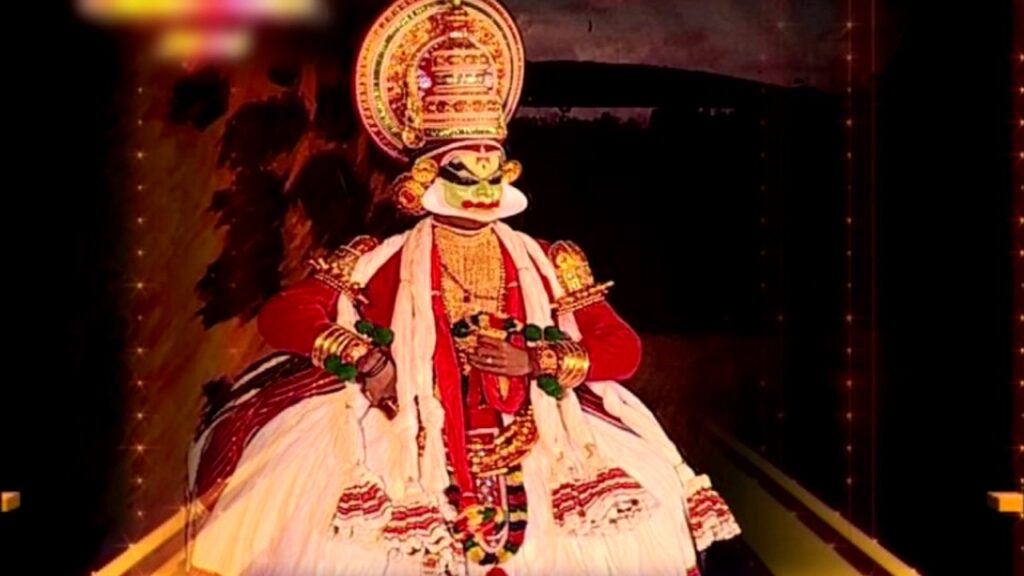It combines devotion, drama, music dance costumes and makeup exuberance. Developed over 300 years ago, this is the medium of retelling the great stories of past usually belonging to Indian epics. Every single gesture of the lips, a flicker of eyes or the movement of the fingers signifies deliverance of emotions. The artist through their practice and skills makes the audience unable to take their eyes off them during the performance.
Costume and the makeup in this dance form are quite elaborate and the faces of the performers are painted in vivid hues.
The makeup in the dance form is of five types, namely Pacha, Kathi, Thadi, Kari and Minukku.
The magnificence of the Kathakali comes from the decor on the sets, from huge ornamental headgears call as Kireetam and Manchu which are oversize jackets worn by the performers.
Artist usually wears a long skirt over a thick padding of cushions.
Kathakali music comes from two varieties of drums called the Maddalam and the Chenda.
Mudra or the sign language is used to depict an idea in this dance form. There is used a systematic sign language based on Hzastalakshana Deepika, a treatise on the language of hand gestures.
To perform the Kathakali dance form, the students undergo rigorous training. They have to learn separate exercises for eyes, lips, mouth, and neck. The expression or the Abhinay is of prime importance in this dance form along with the Nritya or the dance and the Geetham or singing. The story in ‘Kathakali’ is communicated to the audiences through excellent footwork and impressive gestures of face and hands. Footwork is complimented with music and vocal performance.

